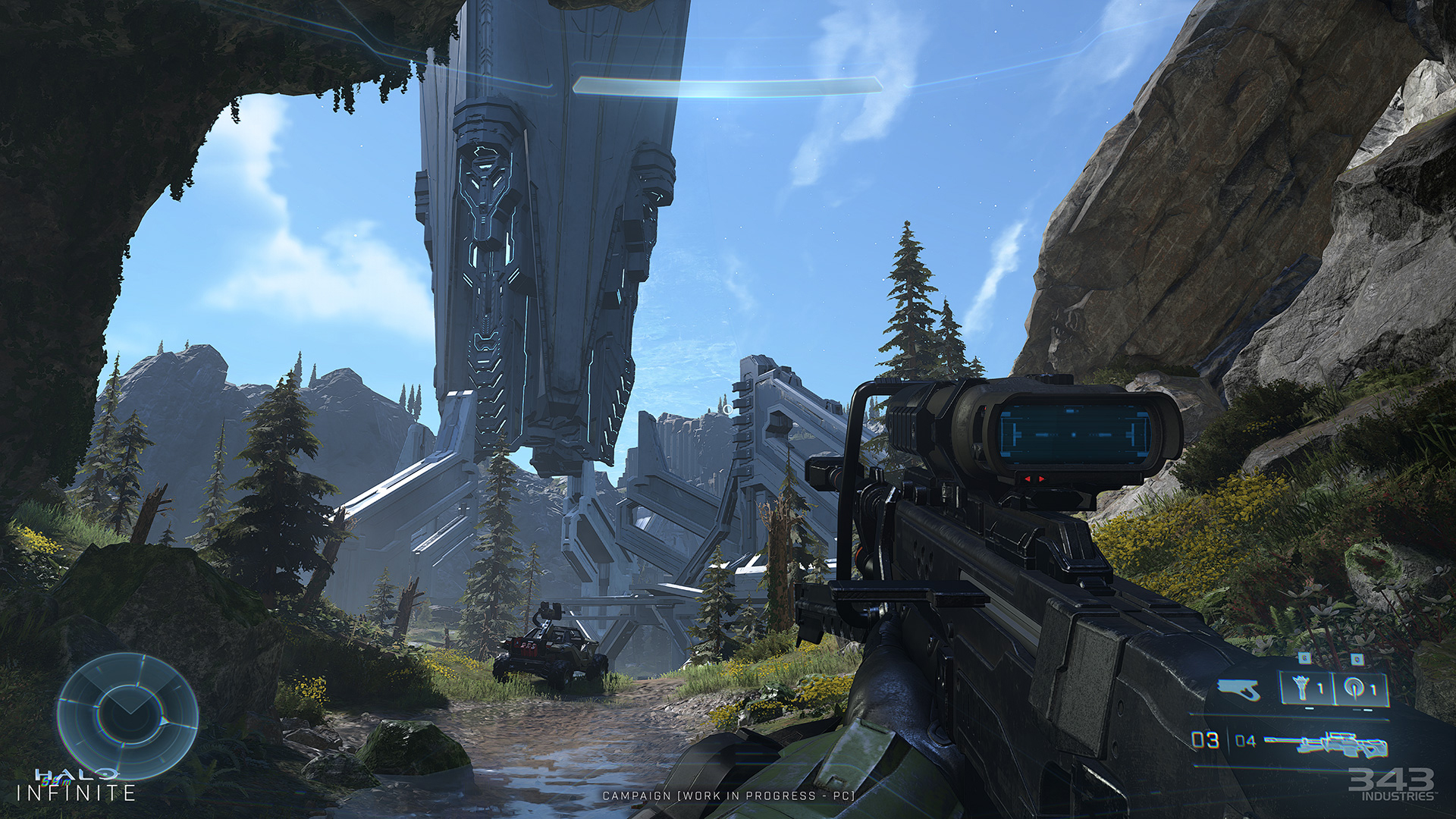Halo Infinite Benchmarked: Master Chief Eats Tons of VRAM
6GB and even 8GB cards can struggle
Halo Infinite puts yet another major launch into the Xbox Series X/S library, and because it’s a first party title, Microsoft has also launched the game on PC. Naturally, we want to see how well Halo Infinite runs on the best graphics cards. We got a game code via AMD for testing purposes, as this is an AMD-promoted game. Sadly, that code was for the Microsoft Store — still the most user unfriendly experience of all the major distribution platforms. That does enable Play Anywhere support for Xbox and PC, but personally I'd rather have the game on Steam. However, that's all beside the point.
We wrote recently about what makes for a good game benchmark, and why built-in benchmarks are so helpful for those who want to check performance. Halo Infinite sadly doesn't include a benchmark mode, which means manual testing while capturing frametimes using OCAT. Our test sequence uses one of the first outdoor areas of the game, cleared of enemies so that we can simply run the same route each time without the threat of dying. Note that performance can be quite a bit higher in other areas of the game, but it can also be lower in multiplayer mode, especially in the midst of a large firefight.
One thing that quickly became clear during our testing is that Halo Infinite using the ultra graphics preset can eat a lot of video memory. While you might be able to get by with 6GB at 1080p ultra, you'll get a better experience by dropping a few settings down a notch — to the point where the game indicates it's not using substantially more than 6GB. We'll run through the best settings to tweak further down the page, but let's start with the head-to-head AMD and Nvidia GPU benchmarks.
Halo Infinite Test Hardware
This might just be the last game where we use our three-year-old GPU testbed — we're looking at upgrading to a Core i9-12900K in the near future, along with Windows 11. The Core i9-9900K may be a bit of a bottleneck at lower resolutions, but as we've seen repeatedly, 1440p and 4K testing usually pushes the bottleneck back to the graphics card.
As noted above, Halo Infinite is an AMD-promoted game, which means the devs may have received some help from AMD in tuning and optimizing the engine. That's probably also why it uses a lot of VRAM, since AMD's latest RDNA 2 GPUs typically have more memory than their Nvidia counterparts — except at the RTX 3060 and RX 6600 XT level. It's also a DirectX 12 exclusive, which often means AMD's GPU architectures run a bit better than Nvidia's, unless the developers put in a lot of extra effort tuning for the various GPUs.
We're using AMD's 21.12.1 drivers, which came out just a few days ago and specifically mention Halo Infinite optimizations. For Nvidia, we're using the latest 497.09 drivers that are also Game Ready for Halo Infinite. We've tested with the public release of the game, with any patches applied, so right now this is what others should experience. Of course, the test sequence and other hardware can and will impact performance, but there's not much to be done about that.
Halo Infinite PC Performance at 1080p
We'll start with the easiest of our test settings, 1080p at ultra quality. Except, we're using a PC with a 4K monitor, and at least the Microsoft Store version of the game doesn't include resolution options. You can run in borderless window (desktop resolution) or windowed mode. Technically we could change the desktop resolution before launching the game, but that makes everything take longer so we just used the built-in resolution scaling slider and set it to 50% — we'll look at "native" 1080p performance when we get to the settings analysis below.
At 1080p (4K with 50% scaling), Halo Infinite indicates it uses 7.11GB of video memory. Obviously, that could present a bit of a problem for some of the GPUs, and under lengthier play sessions, or when Alt+tabbing out of the game and back, or even when tweaking settings, we encountered some anomalies. Restarting the game usually fixed the problem, but even the 8GB RX 6600 XT was prone to slowdowns over time when using the ultra preset — though Nvidia's RTX 2060 didn't seem to have any such difficulties. It could be that AMD just needs to tweak some things in its drivers to improve memory utilization.
Right away, it's clear that using the ultra preset and expecting buttery smooth frame rates might be asking too much of some graphics cards. The RTX 3060 and above average 60 fps or more, but only the RX 6700 XT and above kept minimum (99th percentile frametimes converted to fps) above 60 fps, and that's in the campaign portion of the game. Multiplayer can definitely result in lower performance than we're showing here.
The RTX 2060 and RX 5600 XT end up right around 50 fps, and while it looks like the RTX 2060 has slightly worse minimum fps, please note that these are the best results of three separate runs. Playing a bit longer — like running through several levels in the campaign — tended to drop performance on the AMD GPUs with only 6GB or 8GB over time.
Halo Infinite PC Performance at 1440p
Again, we opted to use the in-game resolution scaling for 1440p, rather than changing the desktop resolution and restarting the game. Specifically, we used 67% scaling on a 4K display, which results in an actual render resolution of 2573x1447 that's then upscaled to our display's 3840x2160 resolution. You'll get slightly higher performance if you're running at 1440p on an actual 1440p monitor at native resolution, but usually only about 3–5% better.
If 1080p ultra looked a bit demanding, 1440p ultra will require one of only a handful of GPUs to keep a steady 60 fps. The RX 6700 XT and RTX 3070 Ti will suffice, but even then minimums can drop below 60. AMD's RX 6900 XT continues to lead Nvidia's RTX 3090 (and thereby the 3080 Ti as well), which again may be due to AMD favoritism — or at least the lack of fully optimized Nvidia performance.
The RX 6600 XT 8GB comes in ahead of the RTX 3060 once more, despite the latter's 12GB VRAM, but lengthier play sessions rather than just a 60 second benchmark run tend to swap positions. At 1440p, the RX 6600 XT often ended up falling into a degraded performance state where it would get around 30–35 fps instead of the 49 fps shown in the chart. Hopefully driver or game updates can eliminate that potential problem.
The same thing happened with the RX 5600 XT, but not so much with the RTX 2060, even though both have 6GB of memory. You can see in our GPU benchmarks hierarchy that the 5600 XT rates slightly higher overall, by about 4%, so the 5.4% lead shown here is well within the expected range. If the 5600 XT ends up in a degraded performance state, however, it can easily drop into the sub-30 fps range.
Halo Infinite PC Performance at 4K
Given the results at the other resolutions, you would expect 4K ultra to prove too much for most graphics cards, and that's precisely what happened. The RTX 3090 (and 3080 Ti) barely averaged more than 60 fps, while the RX 6900 XT comes in at 67 fps. There will definitely be areas and battles in the game where you'll drop below 60, regardless of your graphics card, unless you opt for slightly lower settings.
You can also see here how much lack of VRAM impacts performance on GPUs with less than 12GB. The RTX 3060 now leads the 6600 XT, and would have even more of a lead during longer test sequences. The RTX 2060 also jumps well ahead of the RX 5600 XT.
You probably aren't going to run at 4K on any of the lesser GPUs, but it's worth mentioning that 4K with textures and geometry set to medium (instead of ultra) doubled the performance of the RX 5600 XT. If you're only shooting for 30 fps or more, with a bit of tuning, you should be able to get any of the GPUs we tested up to a relatively steady 30 fps or more.
Get Tom's Hardware's best news and in-depth reviews, straight to your inbox.
Halo Infinite Settings Analysis



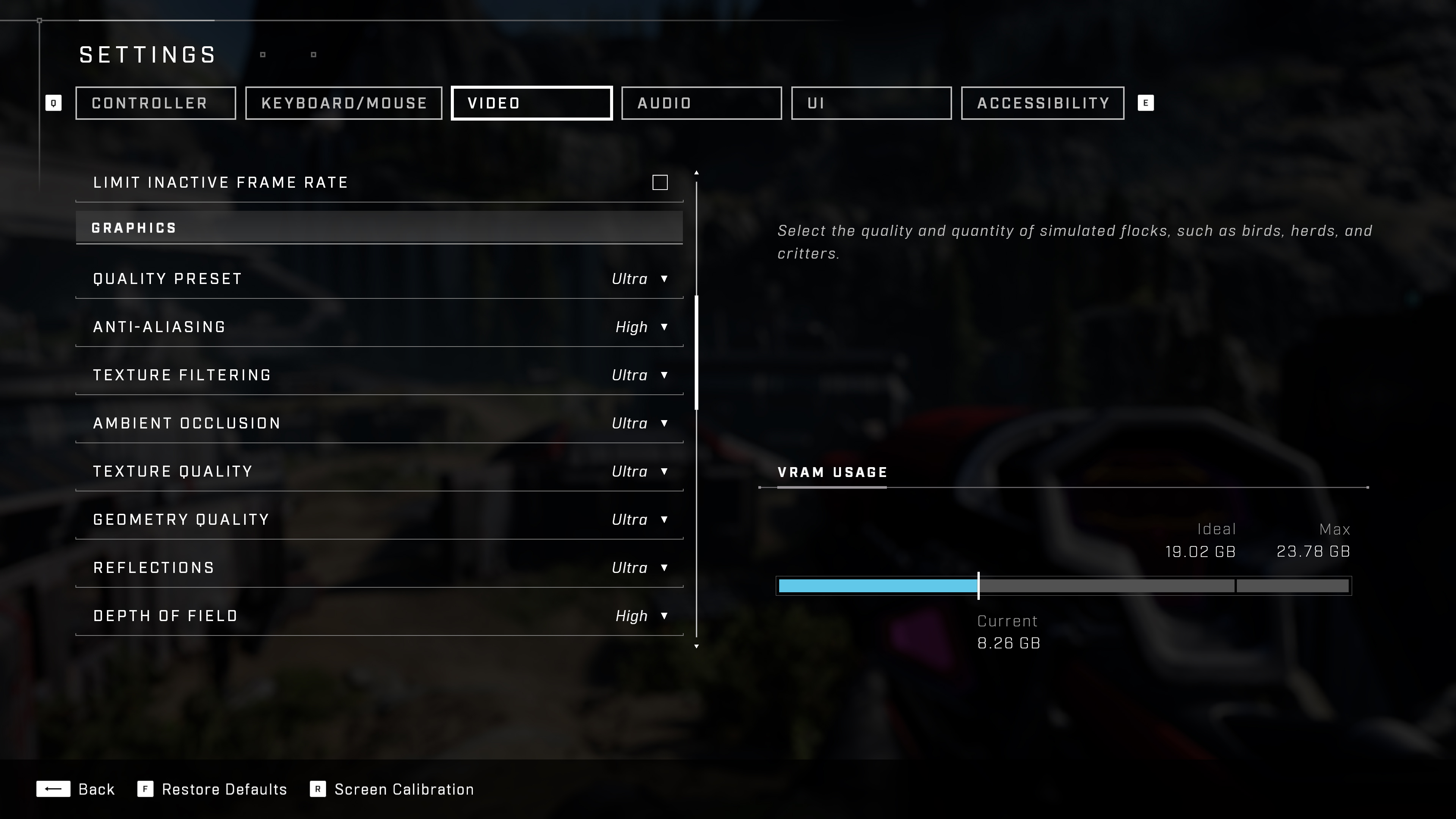





343 Industries takes things to the extreme when it comes to tweakable graphics settings. There are more than two dozen settings you can adjust, not including stuff like V-sync, maximum frame rate, and field of view. The game has four presets: Low, Medium, High, and Ultra, which mostly set all of the individual settings to the corresponding value.
As you'd expect, visually there's very little discernible difference between many of the settings — and that goes for performance impact as well as what you see on the screen. Only seven of the settings made more than a slight difference in performance, and while some of these things are cumulative, some of the settings dropped performance slightly as well. Basically, there are a lot of margin of error results, which strangely even apply to some settings that would normally cause a more significant change in performance.
Nearly all of the settings can be adjusted without restarting the game, though depending on your GPU and VRAM amount, you still might want to do so. Texture quality and effects quality require a restart to take effect, and we tested each setting multiple times to confirm the results (keeping the highest score) — including restarting the game in between settings changes just to be sure the results were valid.

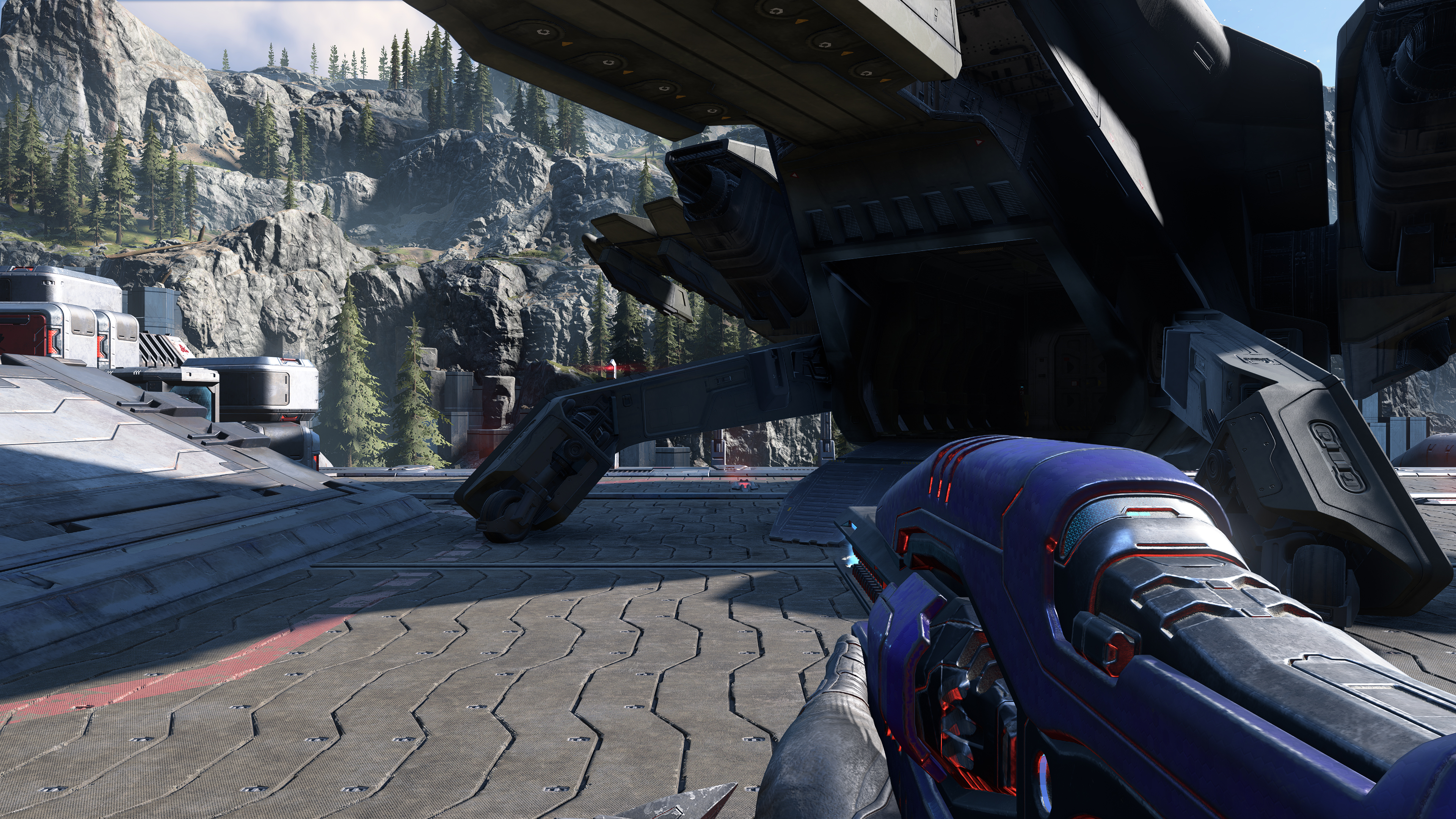





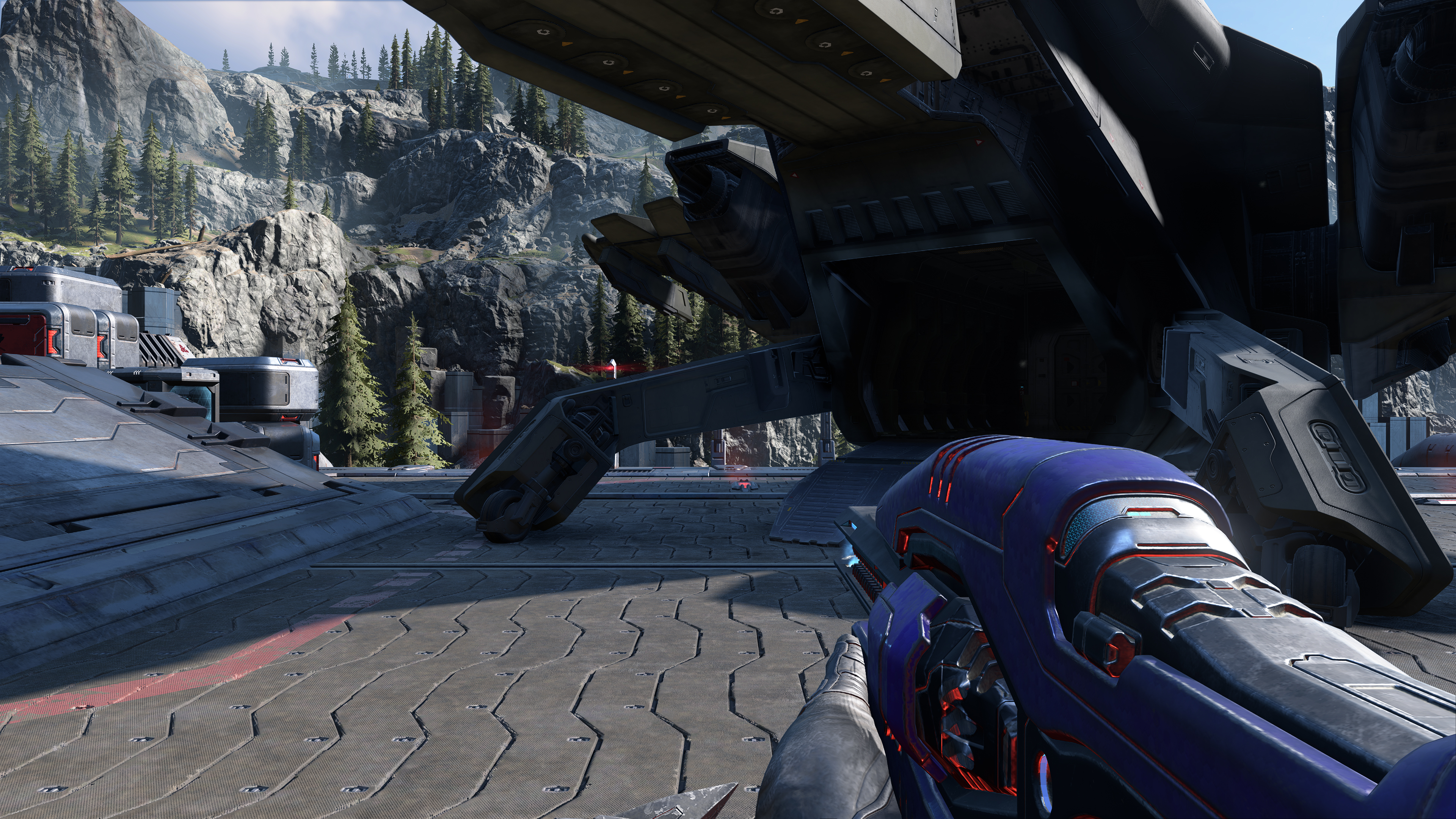
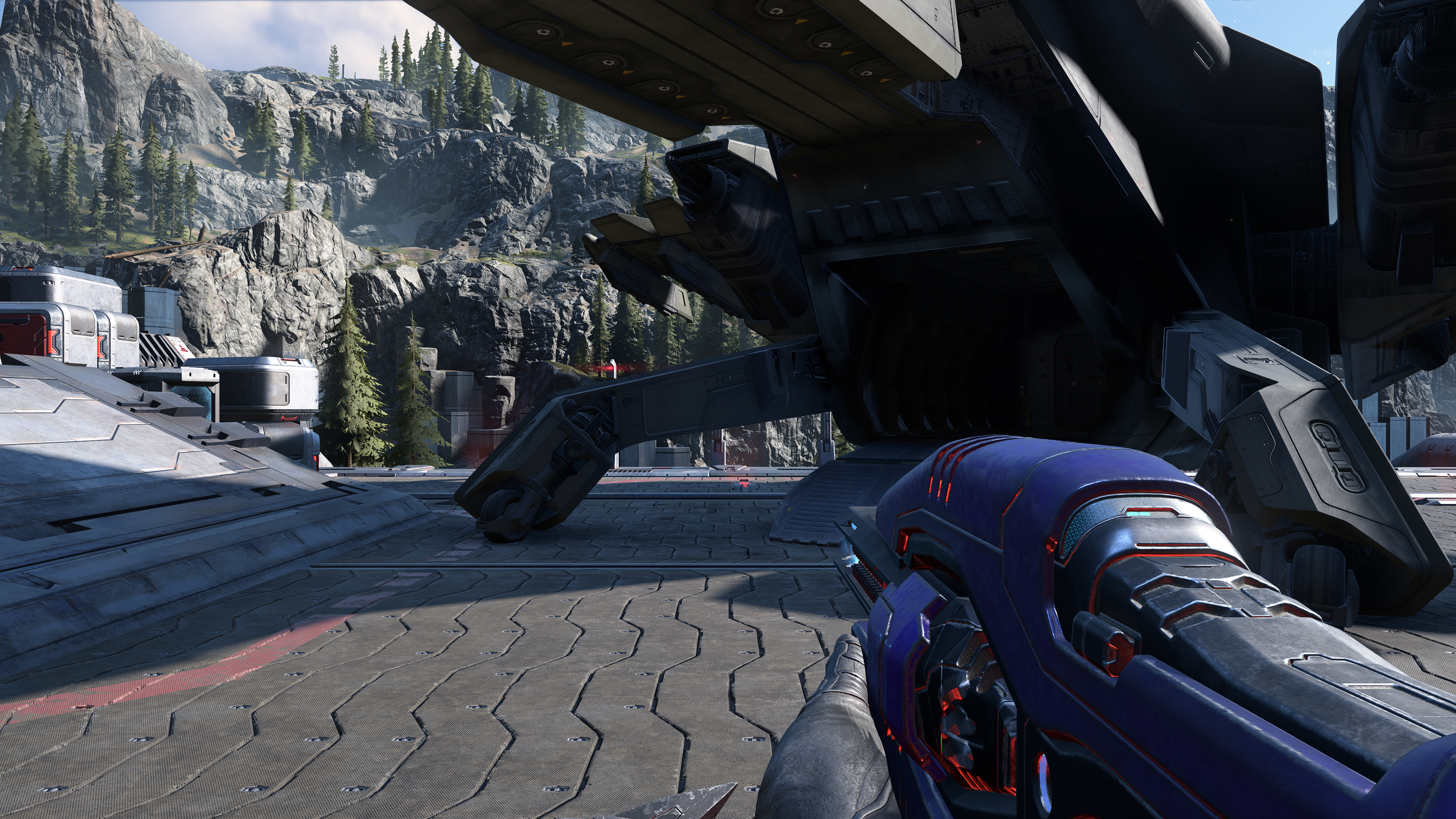


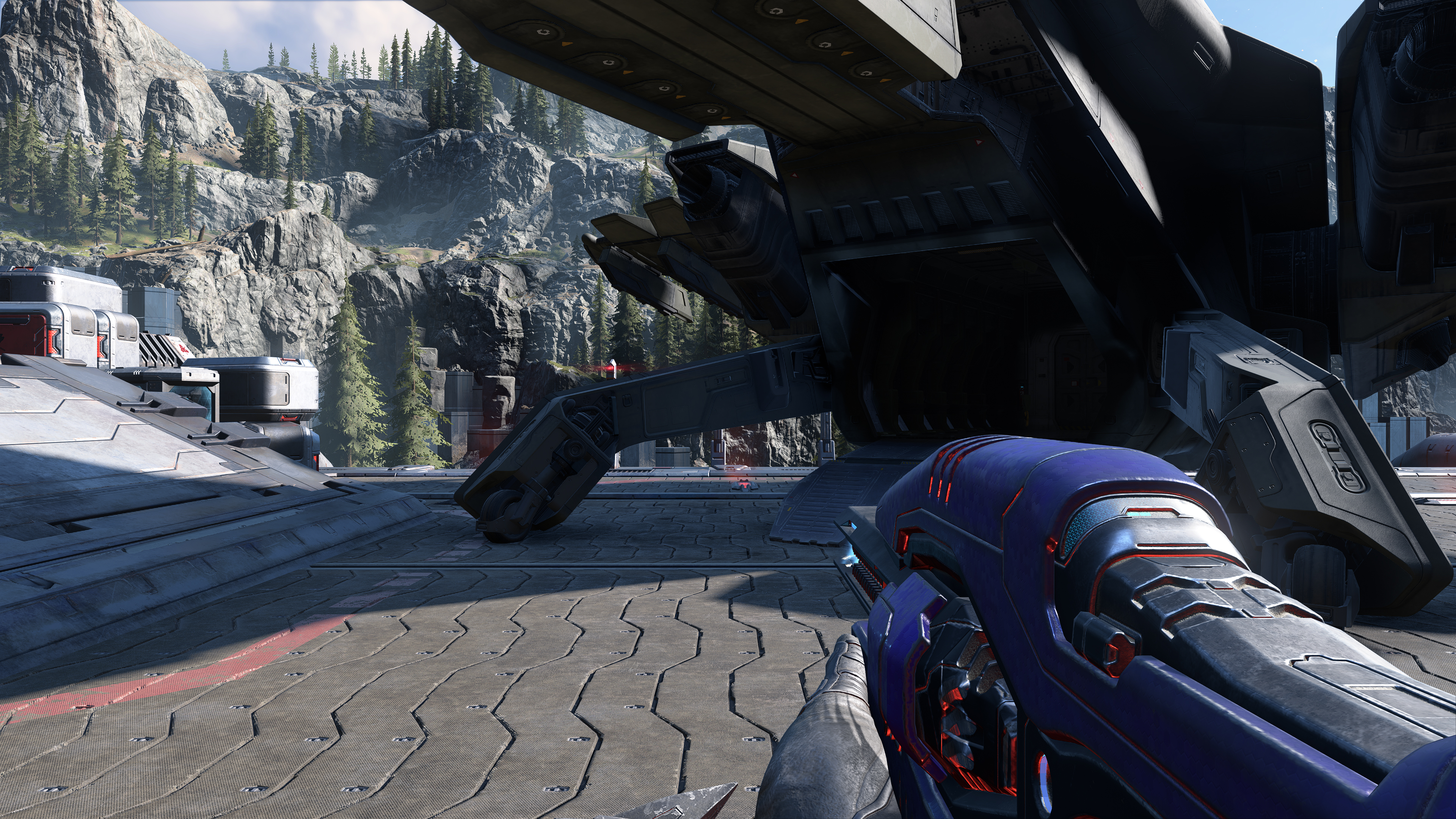






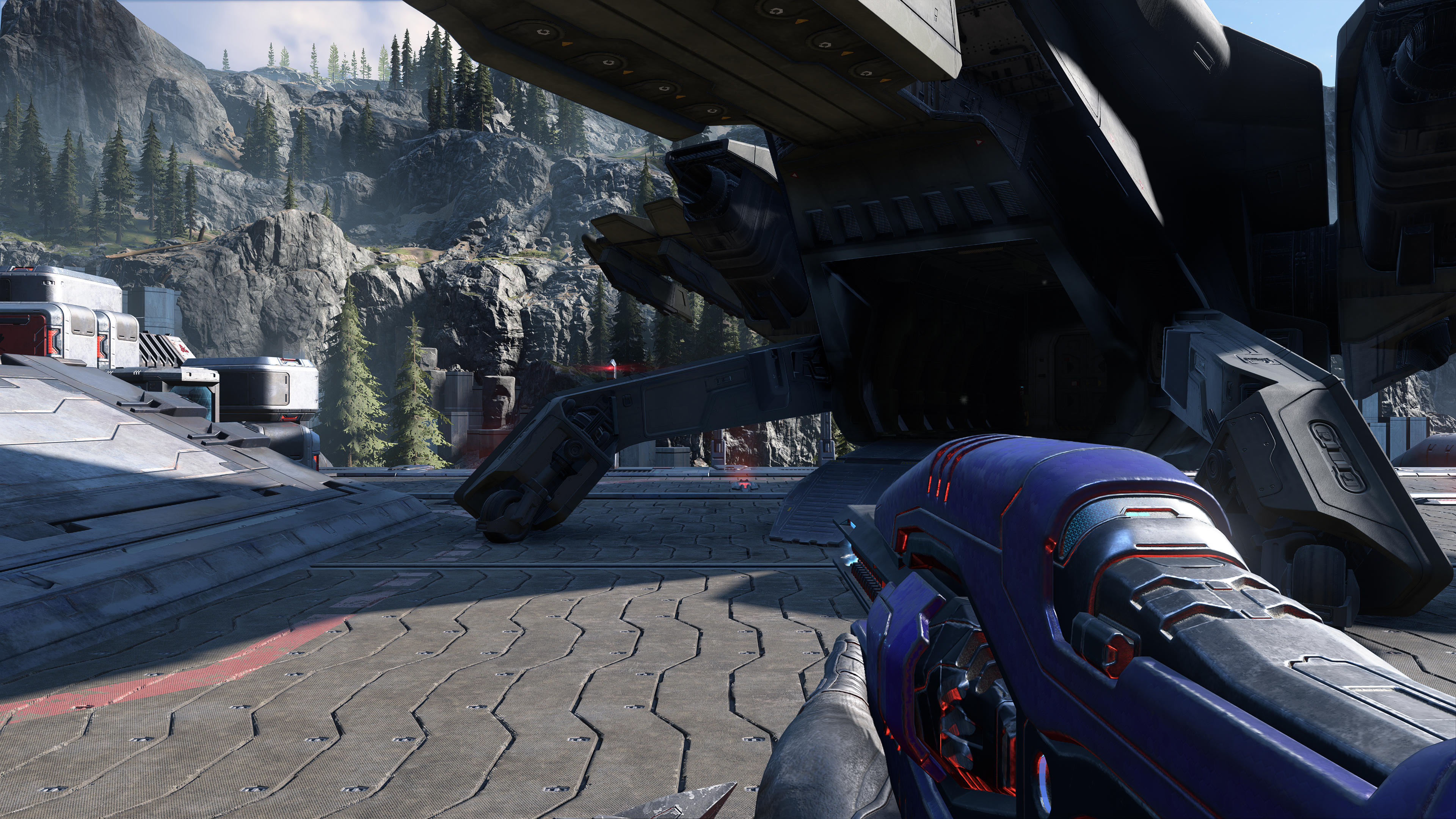







You can see the screenshots of all the various settings, and the difference between most of the settings at max and min is often minimal. In fact, just looking at the ultra, high, medium, and low presets, outside of the variable lighting from the clouds and sky, the change from minimum to maximum quality isn't massive. You could certainly play at low or medium and not really miss anything.
When you factor in performance and image quality together, Halo Infinite honestly doesn't seem to have a ton of scaling. We may be CPU limited to some extent with the 9900K, but even at minimum quality we weren't able to break 120 fps with either the RTX 3060 or the RX 6600 XT. We did get to 154 fps with the RTX 3090, at 1080p low, and the AMD RX 6900 XT would likely go higher as well, but for most "mere mortal" PCs, you should aim for 60 fps rather than 120 or 144 fps.
If you want to tune your settings, the options with the biggest performance impact are Geometry Quality, Shadow Quality, and Effects Quality — if you have enough VRAM, at least. On the RX 6600 XT, where VRAM was a bigger limiting factor, Texture Quality boosted performance by 12%, Geometry Quality was easily the biggest boost at 25%, and Reflections, Cloud Quality, and Terrain Quality were also able to improve framerates by at least 4%.
Also worth noting is that turning Async Compute off dropped performance by 8% on the Nvidia GPU and 15% on the AMD GPU. Older Nvidia architectures (Pascal and Maxwell, for example) might benefit from disabling Async Compute, but AMD GPUs and Nvidia's Turing and Ampere architectures did not.
Halo Infinite PC Looks Great but Requires a Decent GPU
Halo Infinite officially recommends at least a Radeon RX 570 or GeForce GTX 1050 Ti, with a Ryzen 5 1600 or Core i5-4440 or better CPU. That's probably only going to get you 1080p low at 30 fps or more. If you want 1080p high at 60 fps, the recommended system requirements list a Radeon RX 5700 XT or GeForce RTX 2070, with a Ryzen 7 3700X or Core i7-9700K. You might be able to get by with slightly lesser hardware, but one thing you'll definitely need is a GPU with at least 3GB VRAM, and 4GB would be better.
That shouldn't be too surprising. While the game is available on the Xbox One and the refreshed Xbox One S/X, it targets 30 fps on those consoles and uses dynamic resolution scaling ranging from 720p to the full 1080p, with the former often occurring during intense battles. Most PCs will have a faster CPU than the Xbox One, but the GPU might be another story. Regardless, Halo Infinite clearly was designed to make use of the Xbox Series X hardware, so having a PC with similar capabilities will help a lot.
Critical reception of Halo Infinite has been decent from professional critics, though user reviews are more of a mix. The PC version has an 82 score on Metacritic, but only a 6.4 average from users. Many complain about performance, not surprisingly. Most people will probably want to stick with the medium-to-high graphics presets, unless they have a GPU with 12GB or more memory. Even then, don't expect super high frame rates at ultra settings, as the RTX 3060 — roughly the same performance level as the RTX 2070 — only managed a bit more than 60fps at 1080p ultra. That's fine, since visually the game still looks great even at the medium preset.
Interestingly, only the Halo Infinite campaign requires you to purchase the game. If you want to just play multiplayer, that's available for the low, low price of free. Clearly, competition from games like Fortnite, Apex Legends, Valorant, and other multiplayer games has changed what people expect from a game. So, if you want to see how the game runs on your PC, that's relatively easy to do and the only potential cost is the internet bandwidth you'll use on the 50GB download.
MORE: Best Graphics Cards
MORE: GPU Benchmarks and Hierarchy
MORE: All Graphics Content

Jarred Walton is a senior editor at Tom's Hardware focusing on everything GPU. He has been working as a tech journalist since 2004, writing for AnandTech, Maximum PC, and PC Gamer. From the first S3 Virge '3D decelerators' to today's GPUs, Jarred keeps up with all the latest graphics trends and is the one to ask about game performance.
-
VforV ReplyOur test sequence uses one of the first outdoor areas of the game, cleared of enemies so that we can simply run the same route each time without the threat of dying. Note that performance can be quite a bit higher in other areas of the game
Yes, performance actually varies so much that I would say you test is really not indicative of how horrible the game runs in the most demanding parts...
Your test, with the older i9 9900k and a low demanding area cleared of enemies gets this:
And here is Hardware Unboxed on a Ryzen 5950x, doing runs on one of the most demanding parts of the game, full of enemies... can you see how big the difference is?
What I don't understand is why the results are inversed? nvidia is stomping AMD in HUB's test while in your case is AMD is above nvidia... -
Lord_Moonub Would be greatly appreciated if the 3070 featured in these benchmarks. Its notable by omission. Are you guys missing a test card?Reply -
Makaveli i've been playing the multiplayer at Ultrawide 3440x1440 and its been great however my setup is highend 5800x+6800XT. And I have SAM on which is suppose to give a 8% boost in performance from what i've seen posted elsewhere.Reply -
wifiburger and... hardware unboxed shows better FPS for Nvidia and I trust hardware unboxed way moreReply
At least hardware unboxed explained where they run the benchmark and showed on video the run.
This is not the first time I see crazy FPS numbers on tomshardware in favor of 6800/6900 but in reality / other reviews they fall behind the 3080/3090.
Not to mention crap AMD drivers which are crazy inconsistent with fps for various games. -
Makaveli Replywifiburger said:and... hardware unboxed shows better FPS for Nvidia and I trust hardware unboxed way more
At least hardware unboxed explained where they run the benchmark and showed on video the run.
This is not the first time I see crazy FPS numbers on tomshardware in favor of 6800/6900 but in reality / other reviews they fall behind the 3080/3090.
Not to mention crap AMD drivers which are crazy inconsistent with fps for various games.
You may want to slow down on the fanboying bruh.
A comment from the steve on the youtube video.
My performance with SAM on matches what toms is showing.
gFLrRdU5f-MView: https://www.youtube.com/watch?v=gFLrRdU5f-M -
wifiburger did they use the Windows store version of the game ?Reply
Because the nvidia driver optimization for the game is not active with the ms store version !
good move by AMD lol
"as this is an AMD-promoted game. Sadly, that code was for the Microsoft Store " -
VforV Reply
Well that answers my question, at least partially.Makaveli said:You may want to slow down on the fanboying bruh.
A comment from the steve on the youtube video.
My performance with SAM on matches what toms is showing.
gFLrRdU5f-MView: https://www.youtube.com/watch?v=gFLrRdU5f-M -
Makaveli ReplyVforV said:Well that answers my question, at least partially.
kitguru also shows similar
https://www.kitguru.net/gaming/dominic-moass/halo-infinite-pc-performance-benchmark-25-gpus-tested/
-
Blacksad999 ReplyVforV said:Yes, performance actually varies so much that I would say you test is really not indicative of how horrible the game runs in the most demanding parts...
Your test, with the older i9 9900k and a low demanding area cleared of enemies gets this:
And here is Hardware Unboxed on a Ryzen 5950x, doing runs on one of the most demanding parts of the game, full of enemies... can you see how big the difference is?
What I don't understand is why the results are inversed? nvidia is stomping AMD in HUB's test while in your case is AMD is above nvidia...
Yeah, I was curious about this myself. All other benchmarks I've seen from reputable places largely have the same results as HWU, with Nvidia ahead by a fair margin.
